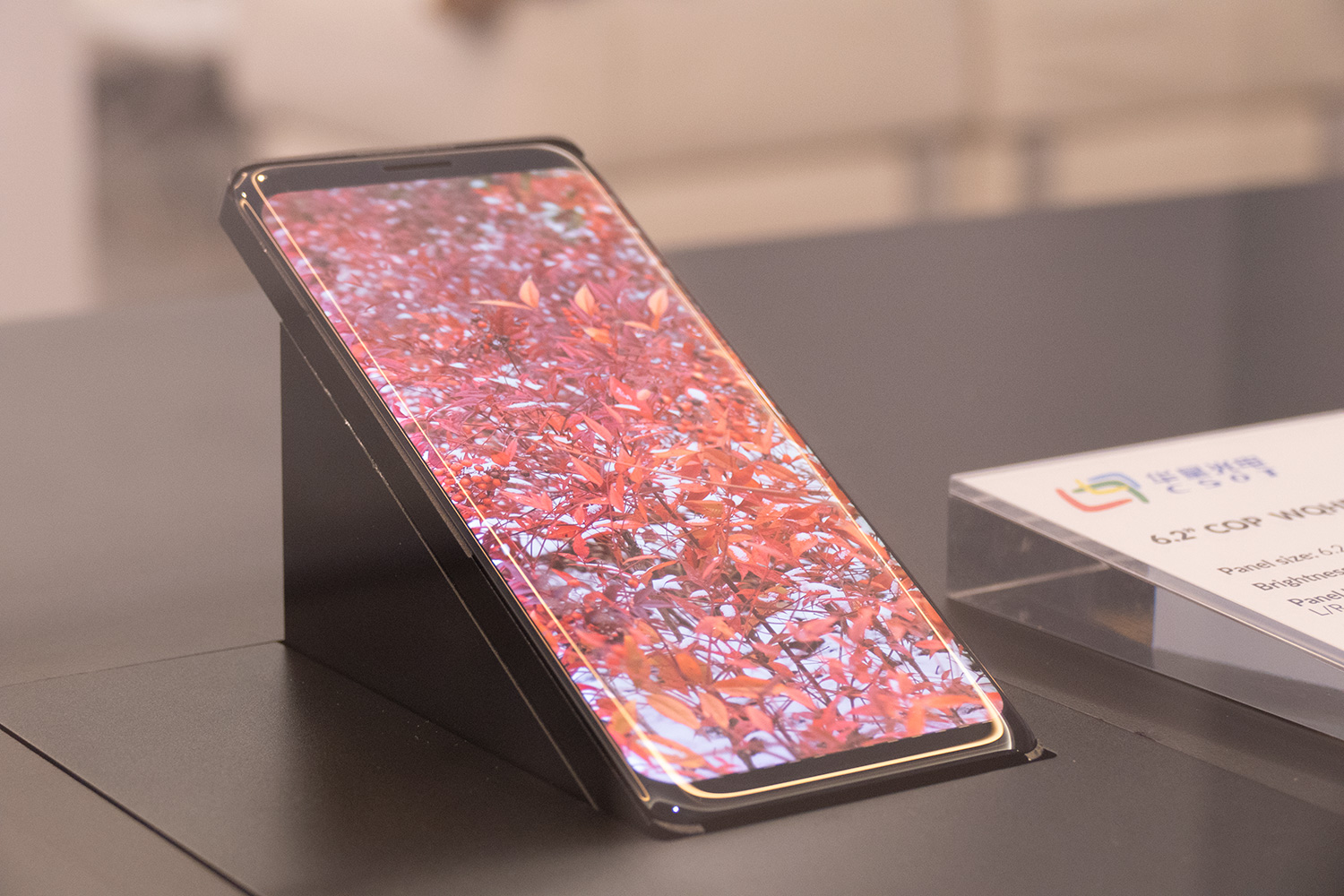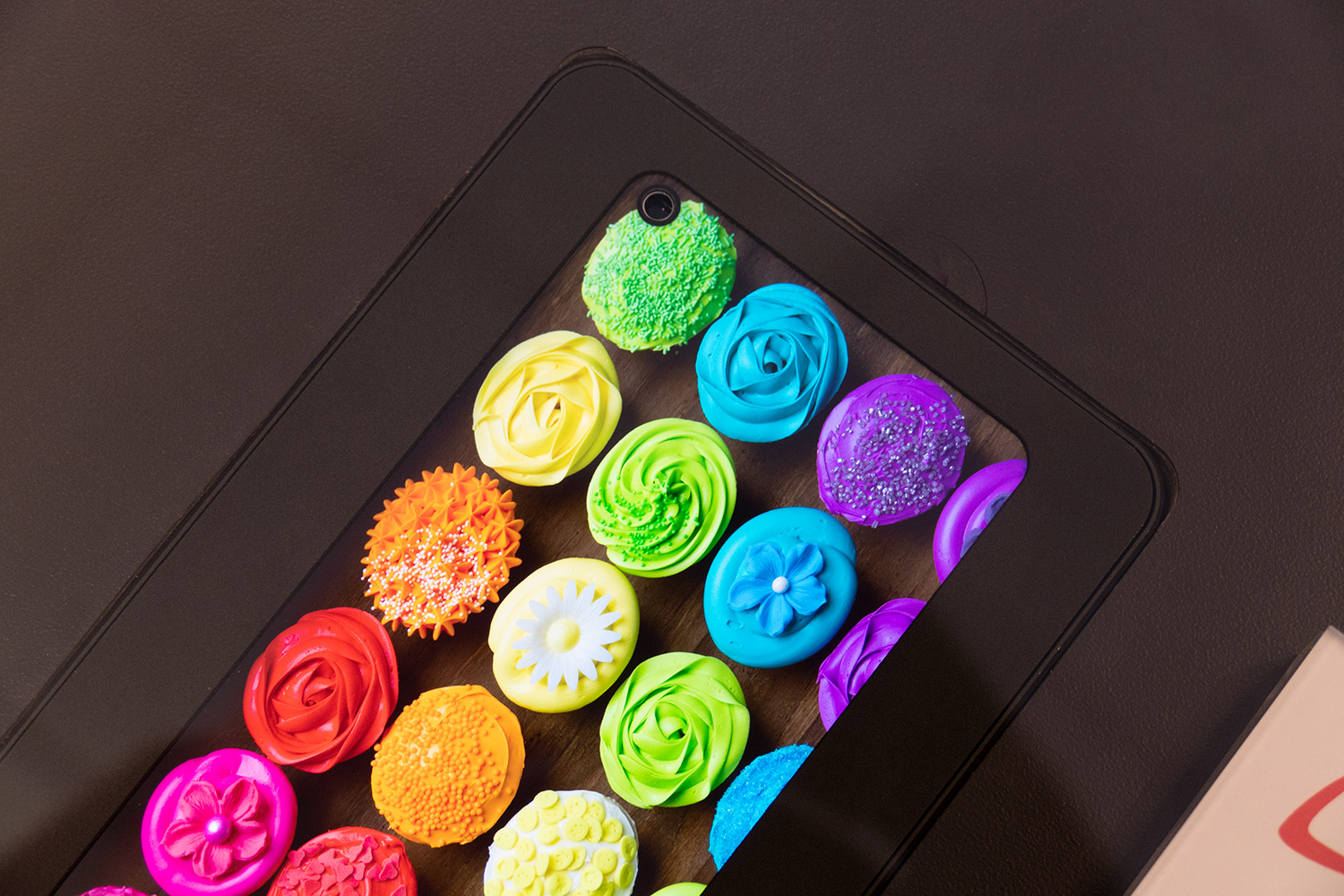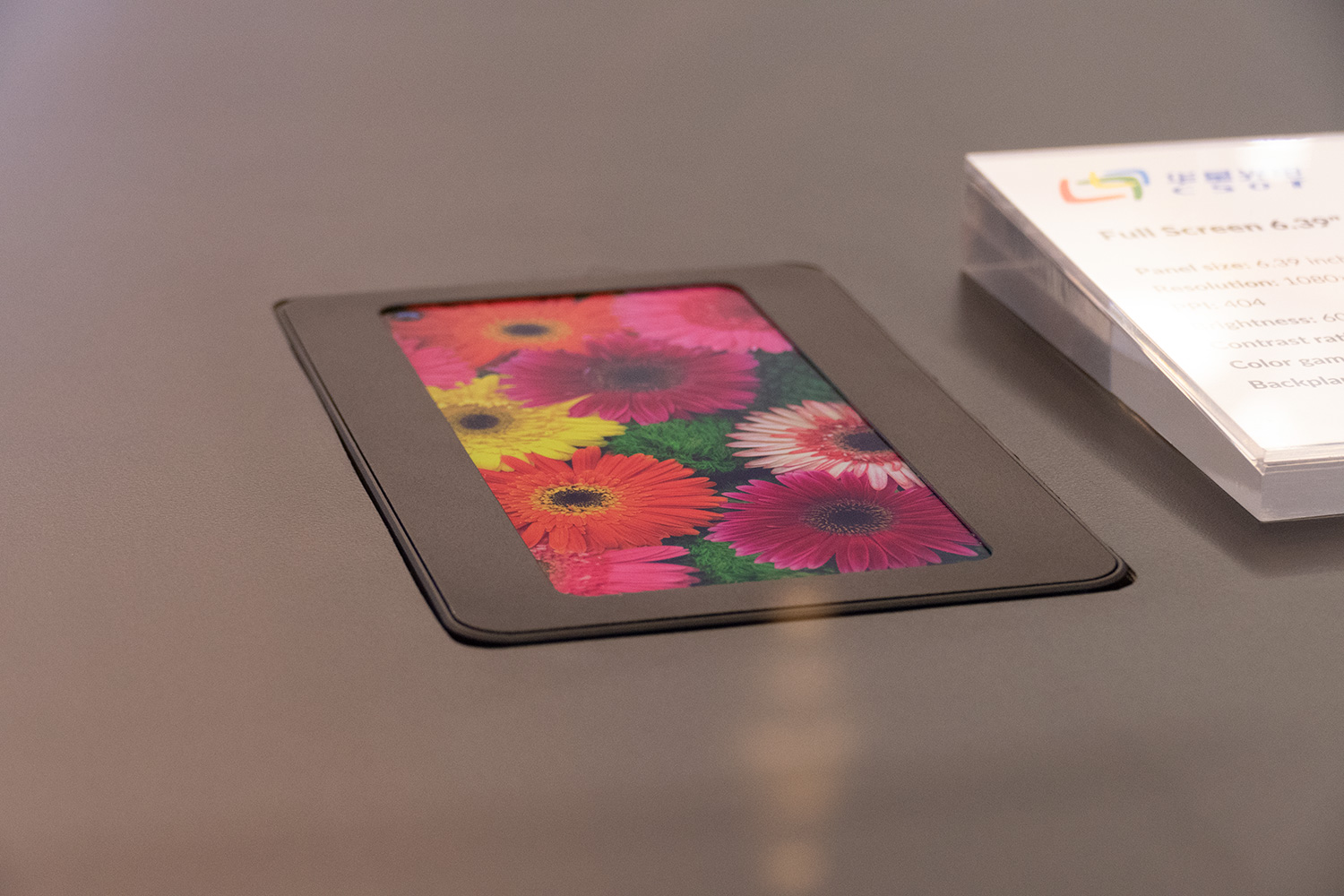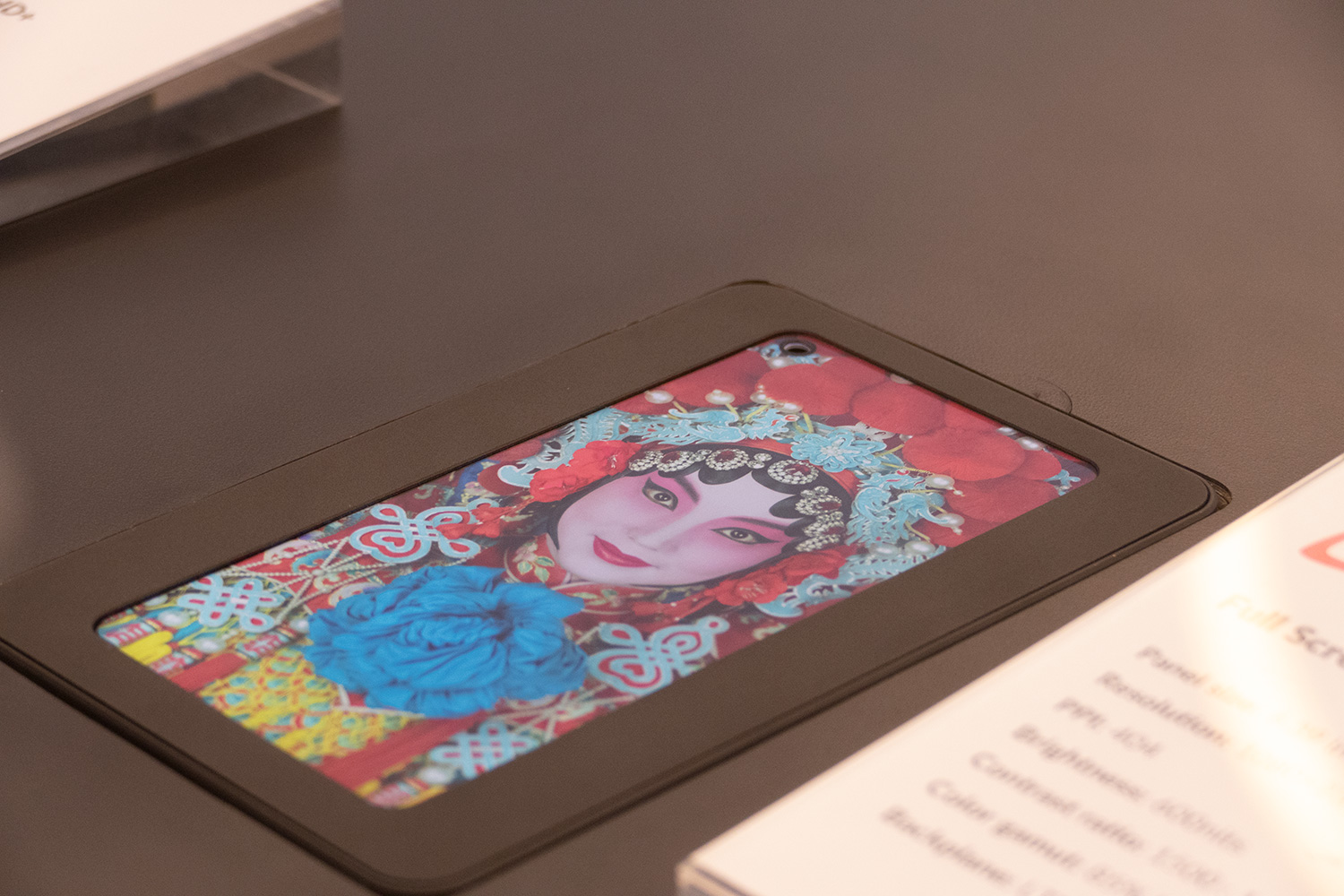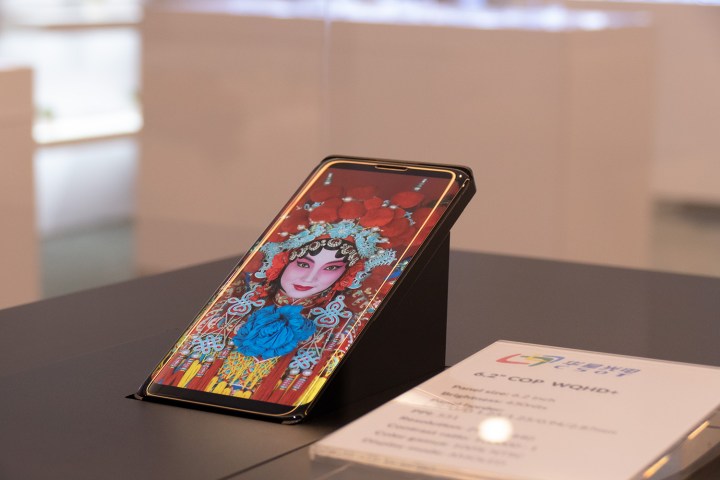
TCL is looking to innovate with mobile display hardware, showing off edge-to-edge and dot displays (also known as punch-hole displays) at CES 2019. As the assault on the bezel continues, and moves on from the notch, manufacturers are trying to find ways of achieving bezel-less screens in phones, and it’s a trend we’re going to see plenty of in the coming year.
We expect to see several devices in different price brackets with dot displays, where a hole is punched out to accommodate a front-facing camera.
“With feature phones, we had sliders and clamshells — a lot of different products — but today it’s the same black box and it’s defined by the display.” Stefan Streit, general manager of Global Marketing for TCL, told Digital Trends. “The market is ready for new product innovations and we see an opportunity.”
TCL is all-in with display manufacturing, having invested $25 billion in display panel technology.
You may know the name TCL because of the Chinese manufacturer’s growing profile as a purveyor of high quality TVs at tempting prices – it’s the third largest TV manufacturer in the world right now. But TCL is also the company behind BlackBerry’s resurgence as a smartphone brand, with devices like the Key2, not to mention the maker of increasingly-attractive budget phones under the Alcatel brand. The recent Palm resurrection came in the shape of a cute, wee companion device that was also manufactured by TCL.
It’s possible that you don’t know the name at all, because TCL has served as a white label manufacturer, turning out hardware to be badged with other brands for years, in fact it still manufactures devices like Amazon’s Echo Dot and Google’s Home speakers. TCL is a hardware specialist and, even if you don’t know the name, there’s a good chance you’ve used a device made by the firm.
A rich legacy of developing display technology, through subsidiary CSOT, is behind TCL’s push into the TV market and last year it began to bring that know-how to its mobile range. TCL is all-in with display technology, having invested $25 billion in display panel manufacturing, building several factories in China and India. The company is betting this will prove to be a long-term differentiator. The 18:9 aspect ratio, Full View displays that rolled into Alcatel phones last year, a rarity in the budget market, were merely the beginning.
CSOT is a leader in LCD and AMOLED panels, and has also been developing flexible display technology. We’re sure to see the edge-to-edge and dot displays in TCL phones this year, probably BlackBerry and Alcatel branded devices, and we expect to see more display innovations showcased at Mobile World Congress next month. We know that flexible displays are rolling into folding phones, and since that’s part of CSOT’s skillset, it doesn’t seem like a major leap to expect some movement on that front.
“We believe product innovation in the next two to three years will come from a combination of 5G and flexible displays,” Streit said.
“We believe product innovation in the next two to three years will come from 5G and flexible displays.”
What would be interesting is if TCL leverages its growing brand recognition through the TV business to launch a premium TCL smartphone. Alcatel is a budget brand and BlackBerry has a very specific niche, so neither is necessarily the best fit for a high-end phone with a flexible display. If TCL is to make a name for itself in the mobile space, though, it will need products that truly stand out.
It is also worth noting that Chinese smartphone maker Xiaomi just acquired a 0.5 percent stake in TCL, and the two have agreed to cooperate on future device development.
More CES 2019 coverage
- BlackBerry sets own pace for 2019: Strikes Verizon deal, but no 5G phone coming
- Huawei’s latest tablet provides a safe, secure environment for children
- The Huawei MateBook 13 could be the MacBook Air killer we’ve always wanted
- Sprint will carry a Samsung 5G smartphone as soon as this summer
We’ve seen a willingness to innovate in hardware from TCL over the last couple of years, something that has been sorely lacking in the wider smartphone industry as it slides towards homogeneity. Few were optimistic about the resurrection of BlackBerry phones, but TCL has designed some great devices. It also helps that the company understands its strengths lie in hardware, and doesn’t look to reinvent the wheel in terms of software.
The idea of the Palm may not have impressed us, but how many manufacturers are even trying to create new device categories and offering up something as different as this? Innovation requires some risk and TCL has shown a pleasing willingness to experiment. However, the company is also determined to get it right, so don’t expect to see a device rushed out the door.
“We want to make sure we deliver a good experience,” Streit said. “We’re not just trying to be first.”
TCL is surely but steadily building a house of brands, a hardware range that may evolve into the elusive ecosystem that every big company wants. Its heavy investment and experience in display technology is sure to bear fruit in the coming year and beyond, and we’re excited to see what the company has in store. It’s unusual for a manufacturer this big to fly under the radar, but TCL may now be ready to step out from the shadows with a series of bold hardware innovations.
